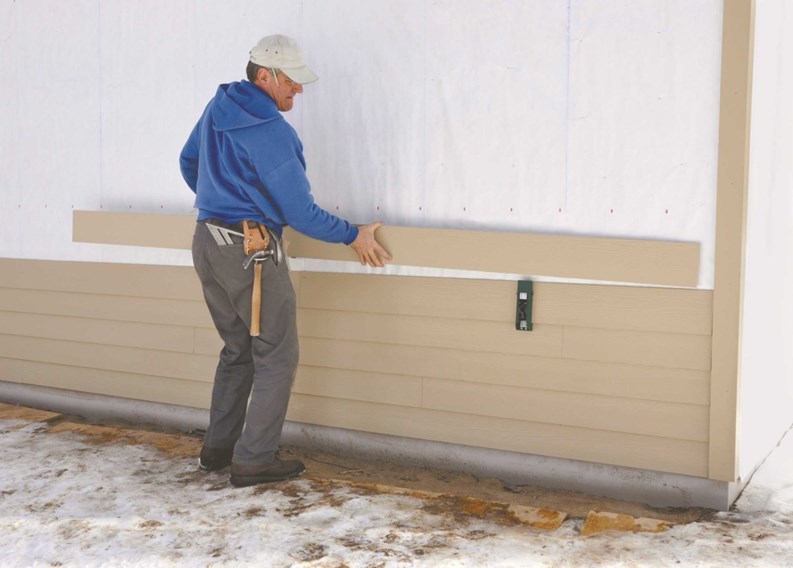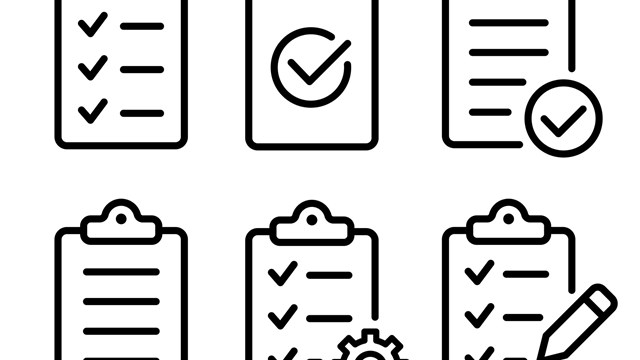It’s hard—if not impossible—to plan a budget for your association and stick to it, especially if maintenance problems and structural crises are constantly taking you by surprise and depleting your community’s bank account. Capital budgets are the long-term budgets that improve conditions in buildings and surrounding grounds, and because the expenditures are infrequent and unfamiliar, they require a different kind of planning than regular operating budgets.
Capital vs. Operating
When boards make plans for the long-term financial health of their community, they have two different budgets for the upkeep of the physical structure: operating expenses and capital expenses.
Operating expenses are foreseeable, regularly recurring costs that administrators can plan for. Something like heat, which is an operating or maintenance expense, obviously must be supplied and resupplied throughout the year. HOA staff salaries must be paid on a regular schedule, and lawn care must be maintained week-to-week. Those are some typical operating expenses.
Replacing the roof, on the other hand, is a capital expense—something that only needs attention every several years. “Capital improvements are things that are going to have a value beyond the current period,” says Richard Montanye, CPA, a partner with Marin & Montanye LLP, in Uniondale, New York, “say a roof, sod work, new boiler, elevator repair…. that kind of thing.”
“Anything that would not be considered regular maintenance is a capital expense,” adds Martin L. Hopkins of Hopkins Investment Management, LLC in Princeton. “They are also typically large projects. The board for which I was treasurer had both a capital reserve and a deferred maintenance account. The deferred maintenance account was used for items such as repainting. The capital reserve account was used for large projects like roof replacement and redoing road surfaces.”
Common Mistakes
Balancing a checkbook is one thing—and some people have trouble with that—but budgeting for an entire HOA is a bit more complicated. Everyone makes mistakes, but when you're managing other peoples' money and property, they tend to be far more costly.
According to Elaine Warga-Murray, CEO and managing partner with Regency Management Group LLC in Howell, “Often boards confuse capital improvements with capital replacements, and make an error in how they fund for each type of work. Capital replacements are known to be needed at a certain time. For example, a roof may have a useful life of 10, 15 or 20 years, so the replacement of that component should be budgeted for in a scheduled reserve replacement or capital replacement fund. By contrast, capital improvements can be anything from installing a covered walkway to upgrading community entrances. Capital improvements should be planned, and they can be paid for out of operating funds or they can be funded by special assessments.”
“The most common mistakes I see are not so much a failure to make provision for capital improvements,” says Hopkins, “but failing to invest their reserves appropriately. Most associations use CD ladders for this purpose. CDs are relatively short term investments compared with the time for which reserves are being made. Our recommendation is that the investment type should match the term for which the reserve is being made. If one plans to do a roof replacement in 15 years, one should use investment types that match that time frame. A conservative diversified portfolio is more appropriate.”
Reserve Studies
Whether you're talking about replacement or capital projects, it's vitally important to know the condition and useful life of the various components of your building or association property. This is where reserve studies come in. Reserve studies are reports made by engineers and architects, who go over a building with a fine-toothed comb, making note of all the ages, conditions, and expected trouble spots in the building’s physical plant.
“There are formal reserve studies that are done by engineers that can be very expensive, says Montanye, ”and there are less formal reserve studies done by managing agents and boards based on their history and knowledge of what has already been done in their building.”
And what are they looking for? “Architects tend to look at the exterior and interior elements,” says Jon Colatrella, head of the survey team at Rand Engineering & Architecture PC in New York City, which does work through the metro area, “and the engineer on the project would be looking at the chemical electrical and plumbing systems. They collaborate on one study.”
“One of the big ticket items is the exterior façade,” says Colatrella. “The reserve study will be looking at the condition of the masonry and what the building should start to allocate on an annual basis for repairing upgrading or fixing any problems associated with it. The roof is another big ticket item. Has it recently been replaced, does it need to be replaced now?” Other elements a reserve study assesses are things like plumbing systems, roofs, and windows.
The study is then used to create a budget for these unusual expenditures, such as a new boiler or roof. “A capital reserve study will make projections over the next 20 to 30 years,” says Hopkins. “The completed review/reserve study becomes a vital document in planning what capital improvements will be done and when. It also provides a vital basis for determining what capital reserves will be required to carry out the improvements and impacts the calculation of HOA fees paid by residents.” The capital budget is not set in stone, however, and can remain flexible and responsive to the needs of the community.
“The reserve study is something that you have to do once, and then it’s updated annually,” adds Montanye. “In the recent storm we had, there were many clients that had significant uninsured damage from the storm, which is not something that most boards consider budgeting for, but in many cases can amount to hundreds of thousands of dollars.” In this case, the reserves set aside for capital projects can be funneled into the necessary repair of the building.
Depending on the size of the building or HOA, a reserve study can take a couple of weeks to a couple of months to complete, and may cost anywhere from $5,000 to $7,000 for an average sized building, and upwards from there for a larger condo or townhome development.
Creating a Financial Plan
“Reserve studies should be done every five years or so, says Hopkins. Once the reserve study is complete, it is important to incorporate the information into a sound financial plan.
“Five-year plans are normally adequate,” adds Montanye,” but for example, say a building is refinancing. HOAs are trying to refinance now because interest rates are low (and in my opinion low interest rates are not a good single reason to refinance because there are a lot of costs involved in refinancing and so forth) but in today’s market most mortgages are 10 years long; so it is important for a board to determine during that 10 year period what is likely to be needed by the building in terms of capital improvements and how it is going to be funded.”
Warga-Murray agrees. “While capital reserve items are generally for components that have useful lives of 20 or more years, a board should always have a five-year plan that includes maintenance as well as capital improvements. For example, a replacement reserve study might have a pool patio gazebo scheduled for replacement in 15 or 20 years, but the board may decide they want to expand the gazebo into a larger, more useful deck. That would actually be a capital improvement, and therefore they would have to set aside more funds for the upgrade than for the simple replacement. Also, things like updating or installing additional elevators should be considered as well.”
For some projects, Colatrella recommends thinking even further down the road: “A 15 year plan. It gives a building a chance to save capital. The average heating plant costs around two hundred thousand dollars. At least if they had a ten-year period to save for it, it becomes a realistic goal. Upon that 10-year mark, they will at least have money to do a substantial amount of it. There’s a chance that the building will still need a smaller loan to cover the costs, but at least they would have most of the money.”
The professionals agree that one of the worst things a board can do is avoid making a budget for these issues, and this can lead to costly options that could be necessary to get the building’ finances back on track.
“Not budgeting for capital improvements,” says Montanye, is one of the surest ways toward financial trouble. Quite frequently, boards don’t recognize the need to set money aside for capital improvements, especially in co-ops when they are refinancing. They don’t provide within that refinancing for the need for various replacements.”
A Plan of Action
And if the association is in real trouble? “There are resources, but there are no real quick answers,” says Montanye. “It’s something that has to be done over time. When I see that situation normally it’s a situation where they’ve done poor budgeting for the entire association, and the first thing would be to make sure that the operating budget is balanced, and then there are always sources of second mortgage money that you could get. Many buildings have credit lines, and you could also assess but you may have to assess over a longer period of time, if there is no money, to try to generate it. You could work out an arrangement with a contractor to accept payments over a period of time for something that needs to be done now.”
“If no capital reserve study has been done, in say 10 years, or never at all,” concludes Colatrella, “I think the first step is to do one immediately, so that the building at least gets on the track to saving. Unfortunately either a loan or an assessment may have to be done but at least the board can convey to the rest of the shareholders that they’ve conducted a capital reserve study and now they have a plan, a road map, for going forward and are at least on track for the next 10 to 15 years for saving purposes…. to avoid these bigger assessments or any further large loans.”
“Good HOA boards are always concerned about doing what needs to be done to preserve the value of their owners' real estate,” says Hopkins. “Poor planning leads to poorly maintained properties, which leads to a drop in value of those properties.” And in the current economic climate, that's something nobody can afford.
Denton Tarver is a freelance writer living in New York City. Additional reporting by David Chiu.







Leave a Comment